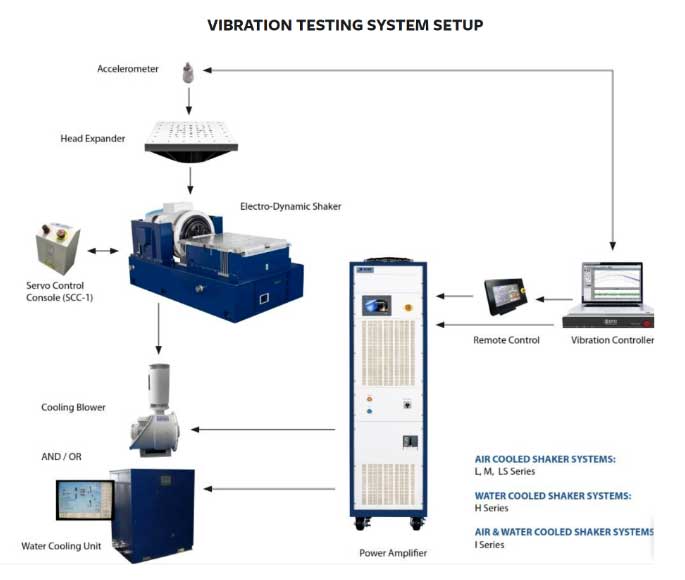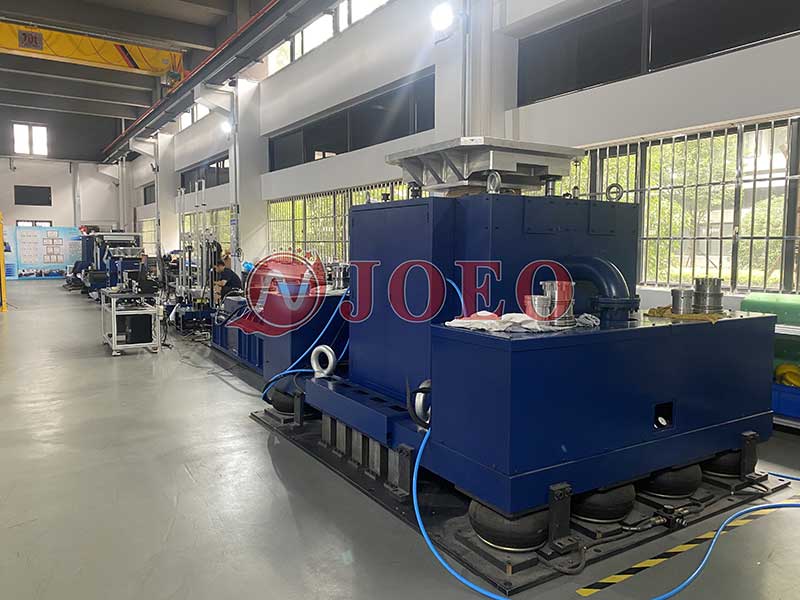Vibration testing is a key step in product development and optimization to ensure that the product can meet the vibration requirements in actual use. Simulating the vibration conditions of the product under normal use is an integral part of the testing and verification process. electrodynamic shaker systems can perform many different tests, specifying sine, random, shock, sine random, random random and other complex waveforms. And copying data collected from real-world conditions. Through these tests, engineers can predict possible failure modes of products, equipment or components and monitor their dynamic response characteristics, thereby improving overall reliability.

If the vibration test of the specimen only needs to be carried out in the vertical direction, then the use of a vertical telescopic platform is sufficient. However, for vibration tests that generally require triaxial (axial) vibration of the specimen, the fixed position of the vibration test should be as much as possible to simulate the fixed position of the specimen in the working or transportation state. If there is no specific installation position requirement for the specimen in the working or transportation state, that is, changing the center of gravity of the specimen by turning over does not affect its performance, the triaxial vibration of the specimen can be realized by fixing the vibration direction of the electric platform and changing the center of gravity of the test device. In this case, only a vertical scaling platform is required. However, for large trials, due to the large size of the electric platform, a horizontal sliding platform is sufficient.
If the specimen has specific installation position requirements under working or transportation conditions, that is, changing the center of gravity of the specimen by turning over affects its performance, it is necessary to change the vibration direction of the electric platform, and realize the triaxial vibration of the specimen while keeping the center of gravity of the specimen unchanged. In this case, both a vertical expansion platform and a horizontal sliding platform are required. The following are the technical indicators of the sc series horizontal sliding platform produced by ALITETSING-JOEO company for reference. The selection process of horizontal sliding platform is similar to that of vertical telescopic platform. Note: The higher the upper frequency limit, the higher the stiffness coefficient required, and the heavier the platform components.
For random vibration test conditions with given frequency range, spectral density value and root mean square value of acceleration (ARMS), the ARMS value is the maximum acceleration required. If no ARMS value is provided, it needs to be calculated separately. The test conditions were input into the random vibration test controller (software) to calculate the root mean square value of ARMS acceleration and the amplitude of Drms vibration.
1. Calculate the acceleration value a based on the user’s specified requirements. The test conditions are as follows:
20-80Hz, 3 dB/oct; 80-350Hz, 0.04g²/Hz; 350-2000Hz, -3 dB/oct.
2. The calculation is as follows:
1) For ascending spectrum (slope N1 dB/oct):
Where m = N1/3.
Then, F1 = 0.04×80[1-(20/80)²]/(1+1) = 1.5.
2) For flat spectrum:
F2 = P(f3 – f2) = 0.04×(350-80) = 10.8.
3) For descending spectrum (slope -N2 dB/oct):
From F3 = 0.04×350[-ln(350/2000)] = 24.5.
The formula for a is a = √(F1 + F2 + F3).
Therefore, a = √(1.5 + 10.8 + 24.5) = 6.06g.
3. According to Newton’s second law (F = ma), calculate the force F:
F = (M1 + M2 + M3)×a,
where:
M1 – Weight of the electric platform moving parts (kg).
M2 – Weight of the vertical expansion platform, horizontal slide platform, or fixture (kg).
M3 – Maximum weight of the test specimen (kg).
a – Maximum acceleration of the vibration test (m/s²).
The force F should be less than or equal to the maximum sinusoidal excitation force of the electric platform.
For random vibration, the force Frms is calculated as Frms = M×Arms and should be less than the rated random excitation force of the electric platform.
4. Confirm that the maximum displacement of the dynamic vibration shaker is greater than the maximum displacement in the test conditions. For random vibration, the root mean square amplitude Drms calculated by the computer should be less than one-third of the rated amplitude of the electric platform.
5. Select a sine control instrument or random vibration control instrument based on the specified test conditions. If there are parameters for random vibration, a random vibration control instrument must be chosen.
Conclusion
Choosing the right electrodynamic shaker systems is indeed a professional decision-making process. We recommend that customers have in-depth communication with professional vibration test equipment suppliers, whose sales team provides professional technical support and solution suggestions, submit the following form, and contact us now!
